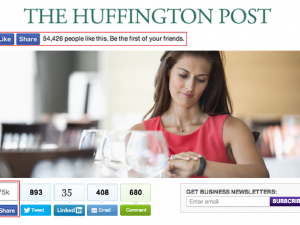Back in 2010, Facebook introduced the Like button to the world. The Like and Share buttons are viewed over 22 billion times each day contributing to a ton of referral traffic on over 7.5 million websites. The problem is that Facebook itself hasn’t officially supported the Share button. Instead, the feature was available through many third party apps as an option to share after you liked something. Now, for the first time, Facebook is rolling out a new design for the Like and Share buttons, independently and combined.
The results of using the new design have been positive according to the Facebook Developer Blog:
Today, we’re introducing a new design for both Like and Share to help people share more great content across the web. We’re already seeing a favorable increase in Likes and Shares with the new design and will be rolling these buttons out to everyone in the coming weeks. If you are currently using the old Like button, you’ll be automatically upgraded to the new design as part of our roll out. We’ve also made it easy for you to include the Like and Share buttons side by side and the Share button by itself.
How the New Like and Share Buttons Look
Here is an example of how you can use the Like and Share buttons together to drive more referral traffic from Facebook to your website:
The new Facebook sharing buttons have already been adopted by popular blogs like the Huffington Post:
Using the New Like and Share Buttons
When using the Like and Share buttons, remember to be strategic about where you place the buttons. As the Huffington Post’s Head of Product Nico Pitney said:
We place the Like and Share buttons right below the headline of our articles and in a persistent left side bar that stays with the user when they scroll down the page. We want to give people every opportunity to like and share content, and, at this point, I like to think we’ve made it hard not to engage in social actions.
You can also use the new configuration tool to display the Like and Share buttons using different styles. Learn more about the redesigned sharing buttons here, where you can also find a few best practices for sharing on Facebook.
What kind of Facebook button do you have on your blog?





